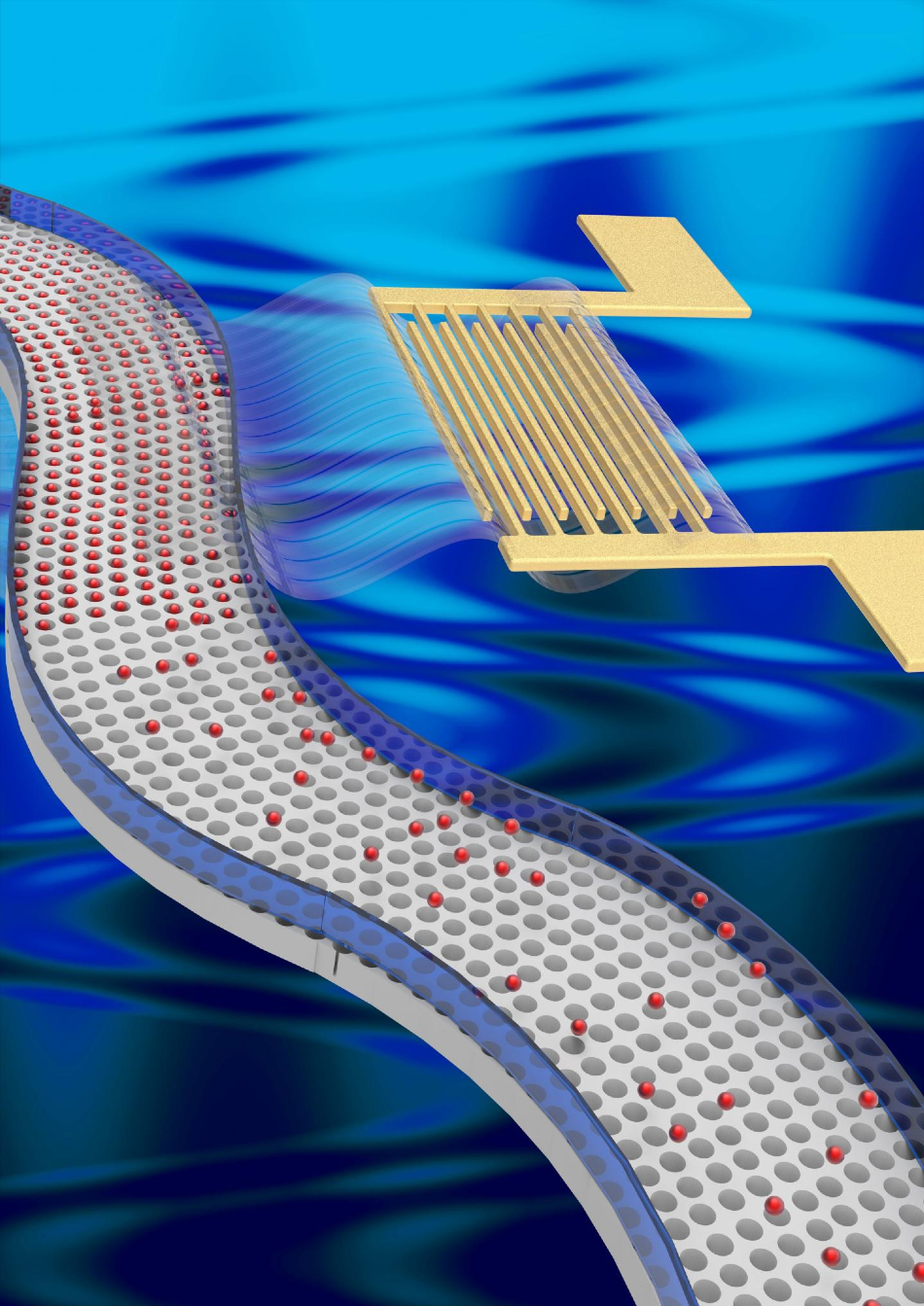May 20 2020
The fusion of fluid mechanics and acoustics is known as acoustofluidics, which offers a contact-free, quick, and effective handling of fluids and suspended particles.
 Massively multiplexed submicron particle patterning in acoustically driven oscillating nanocavities. Image Credit: Singapore University of Technology and Design.
Massively multiplexed submicron particle patterning in acoustically driven oscillating nanocavities. Image Credit: Singapore University of Technology and Design.
The exerted acoustic wave can generate a non-zero time-averaged pressure field to apply an acoustic radiation force on particles that have been suspended in a microfluidic channel.
But for particles less than a critical size, the viscous drag force dominates more than the acoustic radiation forces because of its powerful acoustic streaming, caused by the dissipation of acoustic energy in the fluid.
Therefore, the particle size serves as the main limiting factor for the use of acoustic fields for controlling and classifying applications that would otherwise be applicable to fields such as optics (micro-lenses), biology (small bioparticle enrichment), and sensing (plasmonic nanoparticles).
Manipulation of acoustic nanoparticles has already been demonstrated, but gigahertz (GHz) or terahertz (THz) frequencies are generally needed to make nanoscale wavelengths, where the fabrication of SAW transducers with extremely small feature sizes is difficult.
Moreover, in nanoacoustic fields, the positioning of single nanoparticles into discrete traps has not been achieved. Therefore, there is an emergent need to design a rapid, accurate, and scalable technique for individual nano- and submicron scale manipulation in acoustic fields with the help of megahertz (MHz) frequencies.
An interdisciplinary team of researchers headed by Associate Professor Ye Ai from Singapore University of Technology and Design (SUTD) and Dr David Collins from the University of Melbourne, working with Professor Jongyoon Han from MIT and Associate Professor Hong Yee Low from SUTD, has designed a new acoustofluidic technology for heavily multiplexed submicron particle trapping inside nanocavities at the single-particle level.
Surface acoustic waves (SAWs) are used as the actuation source in the acoustofluidic device, which comprises an elastic nanocavity layer positioned at the interface of the acoustic transducer and the microfluidic channel.
The produced SAW creates acoustically-driven deformations in the nanocavities and generates a time-averaged acoustic field that develops nanoscale acoustic force gradients along the channel.
The researchers leveraged this exclusive nanoscale acoustic force field to tackle the acoustic streaming and Brownian motion, thus controlling millions of individual submicron- and nanoscale particles to move toward the nanocavities.
Execution of the nanocavity layer on the SAW actuator offers discrete trapping positions in which individual nanoparticles can be limited by exposure to SAW and discharged with the termination of SAW excitation. This is a contact-free and fast-processing trapping system with prospects for extensive application in classifying, patterning, and size-selective capture of nanoscale and sub-micron objects.
This study has been published in Small, which is a leading, multidisciplinary journal, covering a wide spectrum of topics in nano- and microscale experimental and theoretical studies, and has been featured on the inside cover of the issue.
Graduate students and postdoctoral fellows from SUTD, including Mahnoush Tayebi, Richard O’Rorke, and Him Cheng Wong, contributed to this study.
Journal Reference:
Tayebi, M., et al. (2020) Massively Multiplexed Submicron Particle Patterning in Acoustically Driven Oscillating Nanocavities. Small. doi.org/10.1002/smll.202000462.